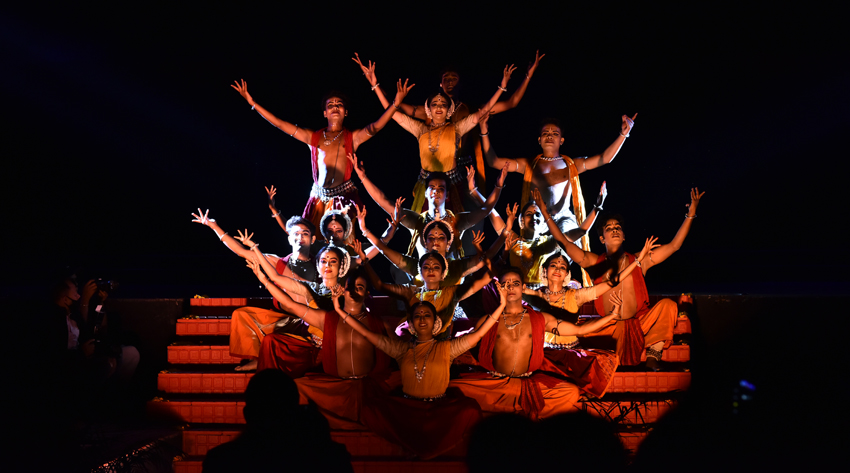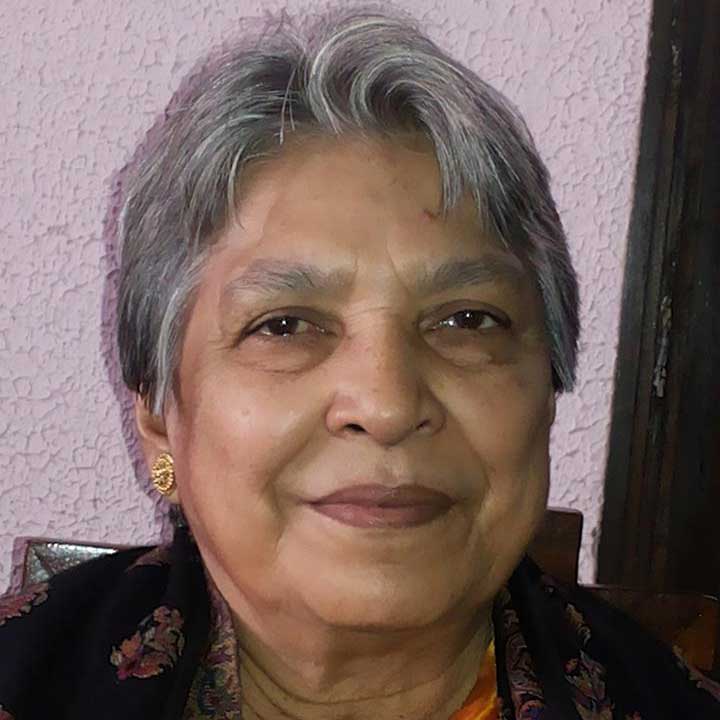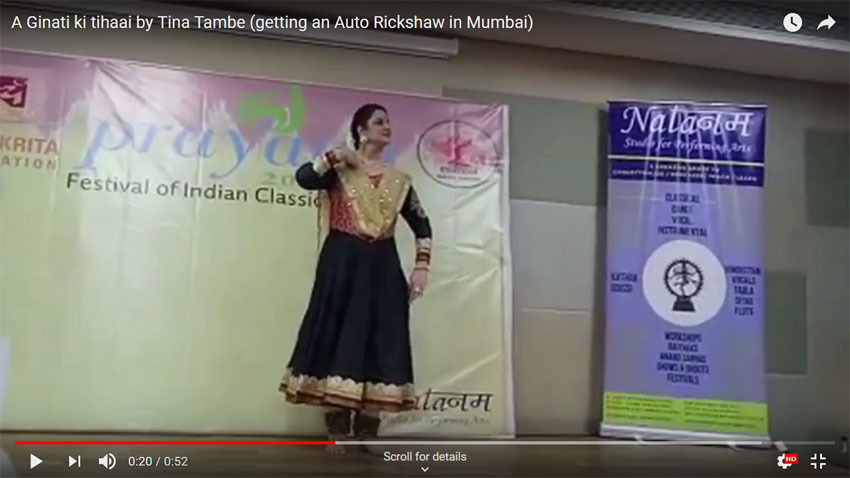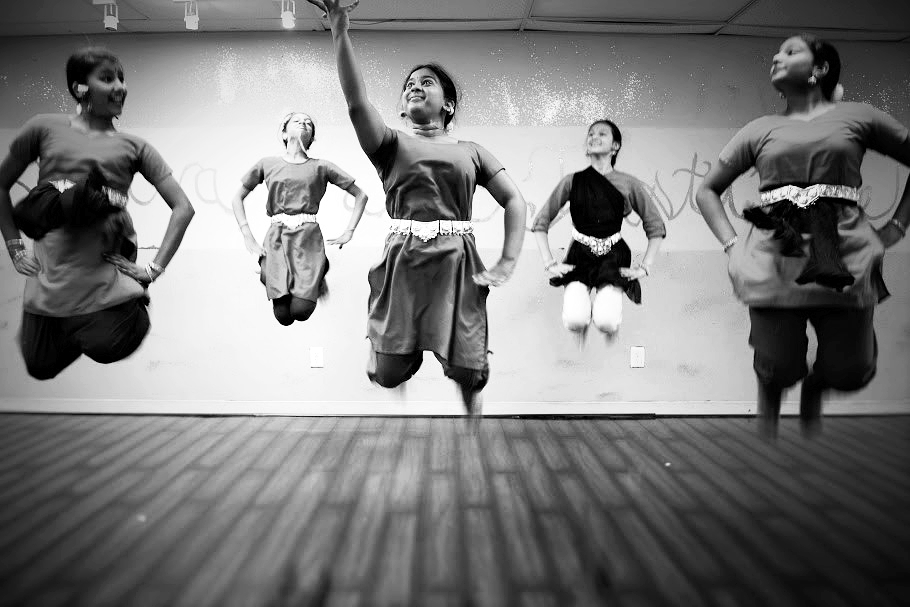Dhauli hills hold testimony of King Ashoka the great’s transformation from Digvijaya-victory through war- to Dharmavijaya-victory through the teachings of Buddhism. Presumably, it is here where the Kalinga war had taken place. It is here where the serene Daya flows, with an aura of mysticism and awareness of ultimate reality.
Since 2003 the Dhauli Kalinga Mahotsav is being celebrated annually at Shanti Vihar in the foothills of Dhauli in collaboration with The Department of Tourism, Government of Odisha and Orissa Dance Academy.
The 17th Dhauli-Kalinga Mahotsav was celebrated for three consecutive days from 6th to 8th February 2021, with much flourish. This year was rather unusual for the festival because of Covid Pandemic. Though held in an open area, with the sky as the roof, the festival was sparsely attended.
The festival is a unique combination of classical and martial art forms of dances on the same stage. The movement of the Chhau dance performers were rather restricting in spite of the beautiful open-air stage. Marking the occasion four genres of Indian dance forms – Odissi dance, Bharatnatyam, Kuchipudi and Kathak -were performed, while all three styles of Chhau Dances- Mayurbhanj, Purulia and Seraikela- were the grand finales on all three days.
The open-air stage built for holding the Dhauli festival was built by Guru Gangadhar Pradhan, who was a legend by his own rights. It offered a perfect ambience to this gem of a festival.
On the auspicious evening of the 6th of February, Dhauli-Kalinga Mahotsav commenced with special guests holding flaming mashals to Shanti Pagoda amidst chants of ‘Buddhang Saranang gachchami….’ . The presentation of a new narrative to Hari from Jaydeva’s composition ‘Jaya jaya deva Hare….’ Was more of new wine in old bottles, though its lingering flavour titillated your taste buds for a long time. It was a unique way of exchange of ideas of choreography between two Odissi gurus. Sharmila Biswas worked with Aruna Mohanty’s students to choreograph the piece.
Odisha is a land full of festivals, There is a saying about Odisha that they celebrate, ‘Baara Masare Tera Parba’ – 13 festivals in 12 months. Nrutya Naibedya of Bhubaneswar gave us a glimpse of the rich cultural traditions of Odisha. The group presented Ananneya Odishi choreographed by the doyen of Guru Gangadhar Pradhan style of Odishi -Aruna Mohanty, on the last day of the Mahotsav. Ananya was a fusion of Classical and Folk.
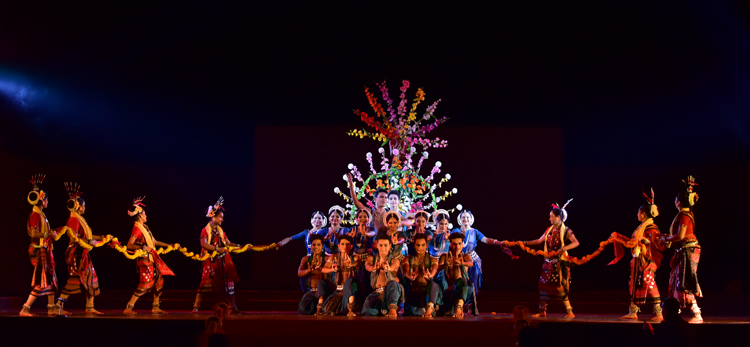
Ananya Odisha -Unparalleled Odisha was a celebration of her spirit through her festivals. Different festivals were danced and enacted realistically. The viewers had no problem in identifying one from the other. Chandan Yatra, when Madan Mohan cools himself in Narendra Pushkarini in Swan-like boats; Durga Puja, marking the triumph of good over evil; Raja Parva, celebrating womanhood; Rath Yatra, the most important festival of Odisha when Jagannath and his two siblings go from Gokul to Mathura in chariots; Shivratri and not to be forgotten is Sambalpuri Dal Khai, to which were easily identifiable, through their motifs and dance sequences and folk songs. It was a well portrayed ‘baro mashe tero jatra leela’ The beautiful lyrics were by the noted poet Kedar Mishra.
[adrotate group=”9″]
Music and rhythm compositions were by a galaxy of artists- Guru Bijay Kumar Jena, Guru Sachikanta Nayak, Guru Sumanta Mohanty, Guru Dhaneswar Swain and Guru Bijay Kumar Barik.
The Artistic Director Ileana Citaristi of Art Vision presented her young and vibrant students in her own choreography of Kalavati Pallavi in Tripata taal to the lovers of dance, before performing Kalidas’ Meghadootam, showcasing love and nature. Nature evokes love feelings, exploited satisfactorily.

Monsoon comes with expectations of union and the lovelorn Nayika’s subtle use of the cloud messenger to convey her love thoughts is poetic. The imageries were spelt out through Guru Kelucharan Mohapatra style of Odissi. The nayika directs the path to be taken to convey her soft message to the nayak for whom she was pining, describes nature at its best. Assisted by her powerful ensemble she sailed through. The guru, however, could possibly have chosen the nayika from amongst her disciples to prevent showing the age difference.
Guru Swapnarani Sinha of Nrutya Nilaya, Angul assiduously trained by Guru Durga Charan Ranbir in the Debaprasad style of Odissi, has earned a niche for herself in the world of Odissi dance. Nrutyanilaya is the proud host of ‘Satkosia Mahotsav’ powered by Govt. of Odisha since 2011. She presented Agni Suktam from the Vedas.

Agni is besotted to purify the hearts of human beings. Both doyens of music and mardala Guru Ramahari Das and Dhaneswar had much to do with the success of the thematic content of Agni Suktam. Chakravaka Pallavi was another marvel showing pure dance interweaving elegant lyrical movements and patterns. Vidushi Kalaimamani awardee Anitha Guha, Artistic Director of Bharatanjali presented a bouquet of dance pieces conceptualized and choreographed by her in Bharatanatyam style to the selected audience, who cared to see them.

Beginning the recital with Sri Andal’s 1st Paasuram – Margazhi thingal, an excerpt from the production – ‘Koodi irundhu kulirndhelor empaavai.’ In this, Andal-the only female Vaisnavite Alvar saint gave a call to the young maidens of Gokulam to bathe in the Yamuna on a full moon day in the month of Maargazhi to take part in the Paavai Nombu-purification of the heart through Yajna. Aesthetic were the descriptions of Krishna’s sharp spear a terror to his enemies; the young lion cub of Yasoda with his charming eyes; his dark-cloud like complexion and eyes of crimson lotus hue; his lustrous face shining like the sun and cool like the full moon; the granter of blessings.
[adrotate group=”9″]
Continuing with a Jathiswara Sahithyam, an episode from the Ramayana is depicted in the Jathiswaram format which involved the annihilation of Vaali one of order to sustain Dharma Rama. Jathiswara sahithyam was in raagam Mayamalawa gowlai and misra chaapu thaalam.. A composition of Sri Neyveli Santhanagopalan.
Gopi Gopala Bala could perhaps be treated as a kind of a sequel. Saint Surdas’ bhajan on Nandalal dramatizing the dalliance of Krishna with the gopis arousing devotion for the lord. The Raasa leela was set to ragam Gamanahsrama in adi taalam.
The troupe of Anitha Guha then launched into singing peons to Shiva. Pancha Shivan represented five of his different forms danced in detail showing Siva’s different attributes. He is the Concealer, the destroyer, the Cosmic being etc. They explained through dance five directions; five elements; five divisions of the human body; five divisions of time; five senses of the humans; five different energies and five different colours. It was a rhythmic dance sequence set to the enthralling sounds of the Damaru and chants of Om Nama Shivaya. A very educative and entertaining piece. With a Tarana to a composition of R. Venkatasubramanian in Ragam Darbari Kanada Tarana and an Abhang in Bhimaha Maruti in Ragam Jaunpuri they called it a day. We had a glimpse of the excellently trained artists of Bharataanjali.
[adrotate group=”9″]
A mesmerizing Kuchipudi Recital titled “Paramapurusha” by Vyjayanthi Kashi and Shambhavi School of Dance enthralled the audience on the last day of the festival.
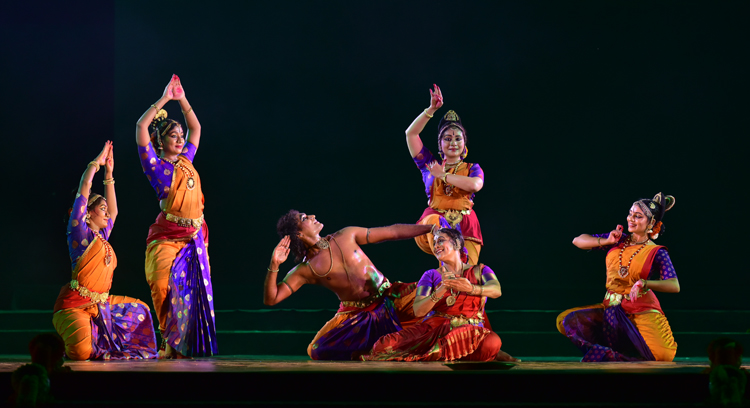
Shambhavi Dance Ensemble took off with their meditation on the beautiful form of Lord Vithoba. An abhang with which Varkaris start their bhajans or kirtans was selected. The physical description of Vithoba with the yellow garment, fish-shaped earrings and koustubh gemstone in the necklace, confirming that he was Lord Vishnu himself, the Paramapurusha, who has incarnated as Vithoba was translated into liquid poetry in the vocabulary of Kuchipudi to a composition of Manoj Vasista.
‘Adivo Alladivo’ a famous composition of Sri Talapaka Annamma Chari was captivating. It brought out the beauty and the uniqueness of the seven hills popularly known as Tirumala dwellings of Lord Venkateswara with his consorts Sridevi and Bhudevi-considered to be the ultimate place for salvation. Manoj Vasishta’s composition was the magic wand.
[adrotate group=”9″]
With a rich load of mythological stories of the land, the practitioners of Indian traditional dances have just to scratch the surface to find costly gems to enrich their repertoire. Neelamegha Sareera from Krishna Leela Tarangini by Narayana Theertha on Krishna’s qualities of mercy and compassion was danced on the rims of a brass plate with the concentration of a Karma Yogi. The story of Kubje who was redeemed from her curse by Krishna was an engrossing tale told in the very expressive language of Kuchipudi.
Kathak exponent Ashimbandhu Bhattacharjee Pratibimba reflects on life which is like a mirror where man finds his myriad identities reflected.
Man is born alone. Even that comes through an act of unique togetherness. Thereafter he remains entwined. He pines for human bondage. Therein lies his fulfilment. He is never single. He is dual. the masculine and feminine. The good and the evil. The puppeteer and the puppet. Creations and destruction. One complements the others. They are mere reflections. Illusions all. He brought out the philosophy of the journey of life in all its abstractness. Pratibimba was one of its kind choreographic work. Endless cyclic parikrama danced together created beauty. Dancers moved all around the stage like petals of flowers wafted in the breeze. A very subtle love that existed between Amir Khusrau and his guru Nizam Uddin Aulia of 13th century A.D. projected the idea ‘I have become you and you have become me-let no one say you are another’ The lyric ‘Ayree sakhi piya ghar aye’ , composed by Amir Khusrau had an old word charm.
[adrotate group=”9″]
Choreographer Ashimbandhu Bhattacharjee wove magic to recreate that Maya with the only medium closest to his heart Kathak dance.

Mayurbhanj Chhau Guru Sadashiva Pradhan’s institution Aangika of Bhubaneswar performed Kapata Katha-tales of deceit centring around war episodes from the great epic Mahabharata- ‘Sharashaya, Chakravyuha, Padmavyuha and Urubhanga from the great epic Mahabharata. These four different episodes involved martial arts performed vigorously with huge jumps and leaps, wielding of the sword and shield confronting enemies with valour. War strategies and formations took the lead. The show was breathtaking performed by the artists of Angika with their sportsmanlike bodies, Purulia Chhau was showcased by Kalipada Chhau Nritya Samity, under the mentorship of Guru Susanta Mahato performed their signature piece Mahisasur Badh. Martial arts were the mainstay. This dance form is predominantly seen in the states of chhau is a derivation of the word is derived from ‘Chhauni‘ which means military camp.

Purullia Chhau Dance originates in the Purulia district in West Bengal and draws inspiration from martial arts and combative training from local practices. Their art of story-telling makes use of elaborate masks and headgears associated with battles. The story generally revolves around the two great epics the Ramayana and the Mahabharata. Purulia Chhau Dance is listed on UNESCO’s world heritage list of dances. Sashadhar Acharya the renowned Chhau guru made his mark with Jatra ghat in which all the musicians of his troupe embarked on weaving sonorous music of 16 beat tala in raga Desh, a musical offering, that evokes the gods and marks the beginning of a Seraikella Chhau performance. The evocative tune accompanied by the frenzied play of drums sought blessings of the patron deities to breathe success of the performance. While all the while the dancers stood in silence with their hands held in prayer asking for divine inspiration.
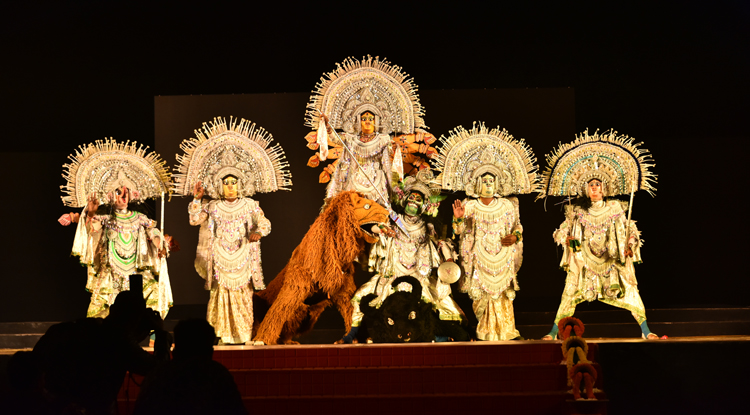
Bhupati Monoranjana was a group presentation. In the history of the technical and artistic development of Seraikella Chhau, the Akara system contributed immensely. There were 8 Prominent Akharas specific to the prevalent communities in the Amino sahi Akara was known for its dance compositions based on martial movement. To please and praise the king was a major objective of the ustads of these Akharas to receive patronage and support of the kings. Bhupatimanoranjan is one such composition .the name itself explains the concept. The performers displayed their skills and technique through this dance composition, which is based on martial movement. It was on a special tala pattern and melody. Garuda Vasuki was a presentation to a Miyan ki malhar and Charukeshi,Tala-8 matras. Garuda, the mythical golden eagle, lord of the skies, and mount of Lord Vishnu and Vasuki the thousand-headed serpent, who holds the universe on his hood and occupies the nether worlds were in a conflict, where Garuda emerged victoriously. Metaphorically it depicts the eternal conflicts in nature between two opposing forces. Pharikhanda khelo was based on the technical aspects that were common to the Akhada period in Seraikella chhau. The Yudha Bidya was a regular activity in the chain or can torment the kings. As an amusement, the same was performed by the soldiers in groups for the entertainment of the people. it is a simple demonstration of the martial technique using the sword and shield as in combat, now a popular dance item in the seraikella chhau dance repertoire.
[adrotate group=”9″]
Each of the stories focused through word, dhol, nagada, shahanai and flute were memorable narratives with correlating body is to be remembered hereafter.
Sangeet Natak Awardee Shashadhar Acharya and his troupe of musicians and dancers excelled in what they did.
More than five hundred artists of various dance forms take part in this festival to celebrate unity in diversity, in the backdrop of the Dhauli Peace Pagoda. Much as I would like to name them all, I am prevented from doing so considering the length of the piece.
Dhauli-Kalinga Mahotsav’s remarkable feature lies in showing their gratitude to the deserving.
[adrotate group=”9″]
Presentation of ‘Buddha Samman’ to Guru Pt. Gopal Chandra Panda a well-known name in the field of Odissi was a much-deserved accolade. He is an expert in both Odissi and Hindustani styles of music. His sole objective throughout has been to establish Odissi music as the third form of classical music.
The presentation of ‘Guru Gangadhar Pradhan Smruti Samman 2021 was given to the best scriptwriter of the time. He has also composed the music of Pallavi, Mangalacharan, Abhinay and Dance Dramas.
He has worked extensively with legends of Odissi Music.
[adrotate group=”9″]
Padma Shri Guru Gangadhar Pradhan was an eminent Odissi exponent, Choreographer and teacher who founded both the prestigious Orissa Dance Academy in Bhubaneswar, India as well as Konark Natya Mandap. He has to his credit countless accolades and honours. Dhauli Kalinga Mahotsav gave away Guru Gangadhar Pradhan Award to Guru K. Ramarao Patro, a renowned internationally acclaimed Veena player known for his effortless execution of melodious tunes. He has made a contribution in composition and accompaniment with Odissi Music and Dance.
Snehaprava Samantray is an Eminent Odissi dancer. She has been trained by all three doyens of Odishi Dance, Guru Pankaj Charan Das, Guru Kelucharan Mohapatra, and Guru Sri Debaprasad Das. Her performance in Solo and group spans over five decades starting from 1970 in almost all major festivals of India and abroad. She was given the Guru Gangadhar Pradhan Award.

A former journalist with the Indian Express newspaper, Shyamhari Chakra is currently the Correspondent of The Hindu newspaper in Bhubaneswar. He was awarded too with the Guru Gangadhar Pradhan Award.
Late Tarakanta Panda was one of the finest and renowned music arranger, director, sound designer and recordists of Odisha who left us for his heavenly abode recently back in October 5th 2020. He was given a posthumous award.
[adrotate group=”9″]
Comparing by Dr Srinivas Ghatuary and Nazia Alam in Odiya and English helped in understanding the theme.



